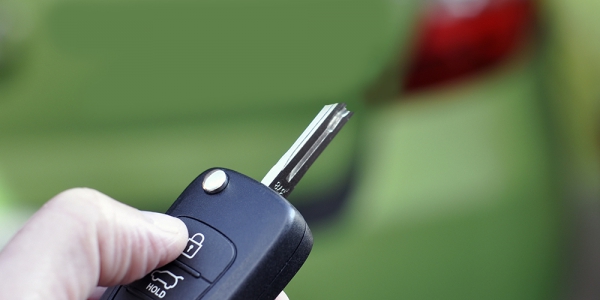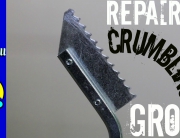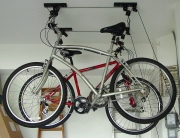A Guide To Extracting Broken Car Keys

Contributed by Ralph Goodman, www.united-locksmith.net
It is not an uncommon occurrence for people to break their keys. It happens to the best of us, and when it does, it is essential that you know how to tackle this problem in the best way possible. Car keys can break for a host of reasons, and sometimes (more like always) they break at the most inopportune times. In most cases, keys break because they are worn down and old, or because there is too much pressure being applied while the key is not properly inserted.
Extracting a car key is not nearly as hard as it sounds. However, it must be done the right way to ensure that no further damage is inflicted on your locks or your ignition, in order to save money. Many car owners think that extracting a car key is an insurmountable task, mainly because the word extraction normally goes hand in hand with some kind of operation. With the proper guidance and patience, extracting a broken car key can be a breeze. This guide is here to help you get through the car key extraction process like a pro.
Before we delve into the nitty-gritty of extracting your car key, there are some caveats that have to be pointed out so that car owners do not dig themselves into deeper holes. As soon as you realize that your key has broken off within your lock or your ignition, you should make sure that you do not begin to fidget with it. There are a few people who have tried to insert the broken half of their key back into the lock with the assumption that it will work the same way as long as the key parts are touching. Please do not do that.
Without further ado, let’s take a walk through the process of extracting your broken car keys.
Here’s What You’ll Need
In order to properly extract your car keys, you will need a few tools that will make the process much easier to complete. These tools will also ensure that you do not damage your car lock. Here’s what you’ll need:
- A suitable non-oil-based lubricant (WD-40 works well in most cases)
- Broken Key Extractor Tool, Broken Key Extraction Kit OR a small hacksaw blade
- Needle-nose Pliers
Here’s What To Do:
1. Lubricate the Keyway
The first step involves spraying the keyway (either for the lock or the ignition) with a lubricant to make sure that the broken piece of the key can be extracted with ease. It is important to always lubricate the keyway before you attempt a key extraction. A damaged lock or ignition is much more expensive to replace than it is to extract your car key, so make sure that you follow these steps patiently.
2. Use Your Tools
After the lock or ignition has been properly lubricated, you will then make use of the broken key extractor tool or the small hacksaw blade. Each of these can be used to draw the broken key piece out. In lieu of using these tools, you can make use of a broken key extraction kit, which can be found at most major retail stores. When using the broken key extractor tool or the small hacksaw blade, you will need to insert them in the keyway so that they can catch onto the bitting of the key, and thus gently pull the broken key piece out.
A broken key extractor kit consists of a pair of spiral extractors, extractor pliers, and a hemostat (yes, you get to play doctor with your car). To properly use the extractor kit, you will have to guide the spiral extractors into the ignition or the door lock. This is done most effectively by re-inserting the broken key piece into the lock so that the spiral extractors can be placed alongside it. This step should be done with caution, and with a lot of patience, so that you do not end up pushing the broken key piece farther into the keyway. Once the spiral extractors are touching the broken key piece, twist each of the spiral extractors in a clockwise motion. After you have done this, remove the guiding key piece that you inserted and then gently pull the spiral extractors out of the keyway. As the spiral extractor is being removed, the broken key piece should also be removed.
In some cases the broken key piece might not slide out all the way (this can happen when you use the other tools listed above as well). If this happens, make sure you used the needle-nose pliers or the hemostat to get a firm grip on the portion of the key that is protruding from the lock or the ignition. Once you have a good grip on it, gently pull it loose.
3. Visit a Locksmith
In some cases, your broken key piece might be embedded too deep within the keyway for any of the above tools to work effectively, so you will have to make use of a locksmith’s services. In the event that you are successful at extracting the broken key piece, you will still need to visit a locksmith so that you can have a new key cut. A professional locksmith will also be able to diagnose your lock and your ignition to make sure that no further damage was inflicted.
Conclusion
See? There isn’t really much that goes into it. Once you have the proper tools necessary for the job, it’s easy enough to get done. However, do make sure that if you are not able to get the hang of this yourself, that you call a professional locksmith to help you out so that you do not damage anything else. Also, practicing proper car maintenance is one of the best ways to ensure that you are never in this predicament again.
Author Bio
Ralph Goodman is a professional writer and the resident expert locksmith on locks and security over at the Lock Blog. The Lock Blog is a great resource to learn about keys, locks and safety. They offer tips, advice and how-to’s for consumers, locksmiths, and security professionals.
ralph@unitedlocksmith.net






Sure wish there was an illustration about how to apply the hacksaw. I can’t picture it. That’s why I look at these kinds of sites.’ I had already thought a bemostat would be a useful tool in this situation but I don’t understand the hacksaw. ✌️